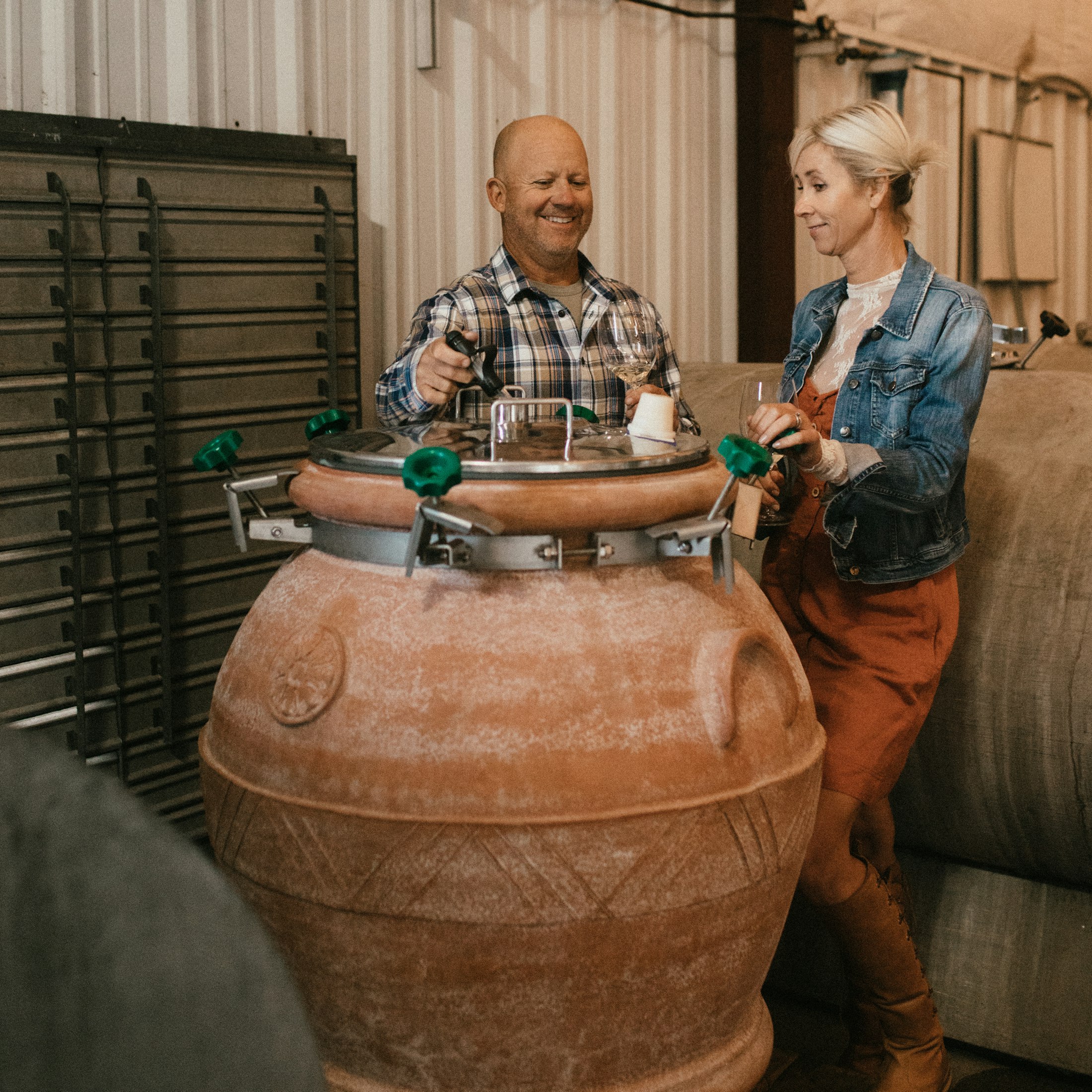Clay Pots make Great Grenache Blancs: appreciating the Art of Amphora

What is an Amphora?
A Brief History into a Winemaking Tradition
Archeologists discovered amphorae as long as 6,000 years ago, and it’s widely believed by scholars that without this clay vessel invention, winemaking would simply not exist. Amphorae was utilized to ferment, transport, and store wine and varieties of oils. Amphorae are still in use today as a nod to natural viticulture and history. The vessels enable winemakers to create beautiful wines from organic grapes with no or minimal intervention, just like it was done thousands of years ago.
The shape of each amphora was specifically designed to produce a distinct type of wine, with the shape and materials used to build the amphora uniquely adapted to influence fermentation. Keeping with tradition, today’s amphorae have a narrow base, fill out around the middle, then narrow again at the top. Handles are sometimes incorporated into modern amphorae, but they are not typically used for transport as they were thousands of years ago.
The design of the amphora encourages air flow, which promotes fermentation and gives the wine the ability to breathe and develop into its fullest potential. The design of amphorae allows the lees from the wine (dead yeast cells, cell membranes of pulp, stem and skin fragments) to be more concentrated toward the bottom, thereby leaving the liquid to gently mingle above. Vinifying the wine together with its lees results in added complexity, structure and mouth feel.
For a deeper dive into amphorae, read the Paso Robles Wine History Project’s series on amphorae [https://winehistoryproject.org…]. Thibido Winery was thrilled to be recently added to their Amphora Trail Map list [https://winehistoryproject.org…].

How Amphorae Creates Delicious Wine
Clay vessels do wondrous things for wine and have an influence on the final product, just like any viticulture vessel. Clay works to enhance acidity during the fermentation process, and the oxygen exchange within an amphora is twice as fast as it is in a wood vessel. Wood barrels are a wonderous way to ferment wine, adding tannins, aromas, and flavors; clay negates all of those aspects and leaves us with a pure, bright, and fresh wine. Well-insulating clay regulates temperature in such a way that the fermentation process is elongated, resulting in a higher extraction level.
We use amphorae to create an intricately refined Grenache Blanc, allowing the varietal characteristics to shine in its truest form. First Date was introduced into the amphora directly following the press during harvest of 2020. The wine was then vinified on its lees and aged in the clay pot until bottling in March 2021.
This wine is balanced and fun, offering flavors of green apple and hints of citrus with a creamy finish. Comprised of 100% Grenache Blanc, the balance of fruit and acid is attributed to the wine’s integration with the natural clay of the tank. A subtle minerality with a pleasant weight and texture are also associated with the use of the amphora. To experience the full flavor profile, enjoy this wine at 55 – 65 degrees, slightly warmer than the average chilled white wine.

Bold Pairings
Grenache Blanc with Unexpected Bites
Grenache Blanc has a beautiful acid to complement boldly flavored foods, spicy entrees, and even creamy textures. Try it alongside spicy braised ribs, creamy blue cheese, pad Thai, or zesty popcorn dusted with lemon zest and cayenne pepper. Want to stay local? We love a glass of this crisp wine with some sliced Alle-Pia Calabrese Salami and Stepladder Creamery’s Ragged Point cheese, a bloomy rind triple crème. With a low alcohol content (13.5%) and the most minimal Sulphur add, Thibido Winery’s Grenache Blanc is easy drinking and a fitting introduction to your next ladies’ brunch or family dinner party.